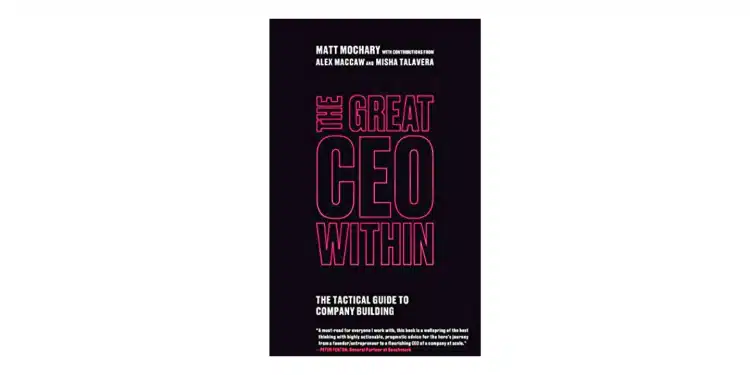The Great CEO within by Matt Mochary
If you’re a technology start-up CEO looking to take your business to the next level, you need to read this book. It’s a one-stop-shop guide that lays out a roadmap for scaling up your business. The book is broken up into small, bite-size chapters, making it easy to read and follow along. It’s like a manual or workbook that’s packed with insights and detailed information on everything you need to know.
One of the things I found most useful about this book is that it’s filled with practical tips that are not immediately obvious. For example, the importance of punctuality. The book explains that arriving late can destroy the productivity of the other person, as they are unable to commit to starting an alternate activity while waiting for you. This insight gave me a way to explain the importance of punctuality to others and made me a better manager in the process.
Another valuable insight in the book is the concept of the Zone of Genius. The author argues that the biggest danger a CEO can fall into is being sucked into the area where they have the highest competency but don’t enjoy the workflow. Instead, he suggests dedicating time to areas where your expertise is greater than anyone else, and this is what you enjoy the most. While this may not be realistic for a first-phase startup, it’s definitely something to consider as your business grows.
The book also offers a great screening technique for hiring. The author recommends only recruiting people you are 100% sure will be or have the potential to be A-grade. This mindset ensures that you’re hiring the best people for your team.
Finally, the RAPID decision-making technique is a game-changer. It’s a protocol developed by the Consulting firm Bain that optimises decision-making. It involves identifying an issue or decision that needs to be made, preparing a write-up with the necessary details, and getting input from the relevant people. The technique ensures that everyone who needs to be heard is heard and that decisions are made efficiently.
In conclusion, the author, Matt Mochary, successfully took his start-up to being a hugely successful technology company, raising $100 million in VC funding before being sold. His book is a must-read for any technology start-up CEO looking to scale up their business. It’s packed with valuable insights and practical tips that are easy to understand and implement. So, if you want to be a better CEO, read this book!



Get involved!
Comments